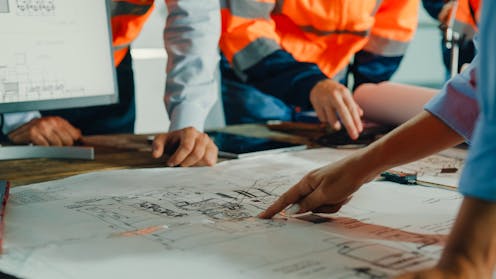
Hankuk Carbon's new R&D center stands in Magok, western Seoul. Built on a 7,000-square-meter site, it was completed by DPJ&Partners Architecture, Oct. 22. Courtesy of DPJ&Partners Architecture
FKCCI chairman utilized composite materials
By Ko Dong-hwan

DPJ&Partners Architecture CEO David Pierre Jalicon
Hankuk Carbon's new research and development (R&D) center in Seoul showcases the evolution of local architectural techniques, as the building incorporates the developer's composite materials to innovatively portray the firm's brand identity, according to DPJ&Partners Architecture in Seoul, Wednesday.
The new R&D center in Magok, western Seoul, completed last month to commemorate the 40th anniversary of Hankuk Carbon's establishment, won honors from Red Dot 2024 in Germany and IDEA 2024 in the United States in June. David Pierre Jalicon, CEO of DPJ&Partners Architecture, received acclaim for his utilization of composite materials to achieve aesthetic beauty; and for improving building techniques for the center.
Jalicon, also chairman of the French Korean Chamber of Commerce and Industry (FKCCI), said that at the heart of designing the center was combining possibilities of composite materials while expressing the genuine identity of Hankuk Carbon. He used precast glass fiber-reinforced plastic (GFRP) panels for the center's progressive weaving facade. For the center's canopies, he chose honeycomb aluminum panels that were developed and produced by the company specifically for the purpose.
Because of Hankuk Carbon's role in building the center and its partnership with DPJ, Hankuk Carbon's creative director, Victoria Cho, was co-awarded with Jalicon.
"I have noticed that compared to the aerospace and automotive industries, the construction industry is not using enough composite materials," Jalicon said. "This project should serve as a sample and showcase of what new composite materials can offer to the construction and architecture fields."
Jalicon used GFRP because it is lightweight and has good insulation, lower carbon footprint and infinite possibilities in terms of shape. He also liked it because it is "minimalist in terms of installation."
"I've been involved in many luxury brand flagship stores, which reflect each brand's knowhow through very sophisticated design, so there was something similar in this project as composite materials are sophisticated by definition," Jalicon said.
"The center's canopy, for example, will not only express the composite material of this building. It will also be seen as an iconic anchor and an elegant element in the Seoul skyline."
Because composite materials' biggest strength is its light weight, Hankuk Carbon's architectural exterior materials effectively integrated functionality, aesthetics and sustainability into the center, according to Cho. She is content with how the competitive materials have become part of the company's new brand identity.
"Branding is not limited to logos or slogans," Cho said. "Office buildings are the ultimate expression of the brand identity, visually capturing a company's essence, vision and values in the architectural design.
Hankuk Carbon's composite materials are currently in use in leisure, ports, liquefied natural gas and aerospace industries worldwide.


















 English (United States) ·
English (United States) ·